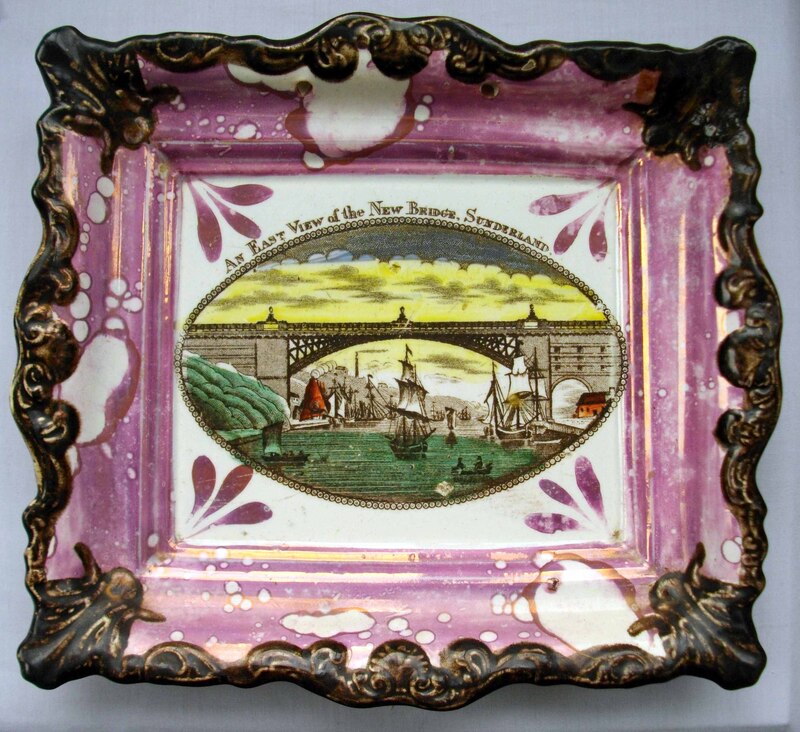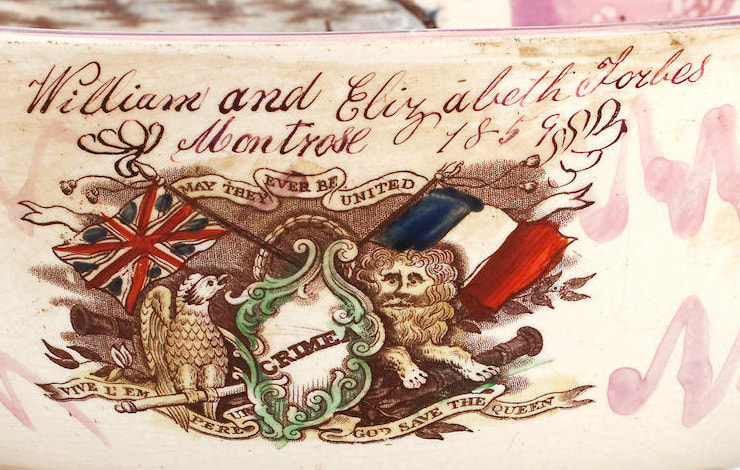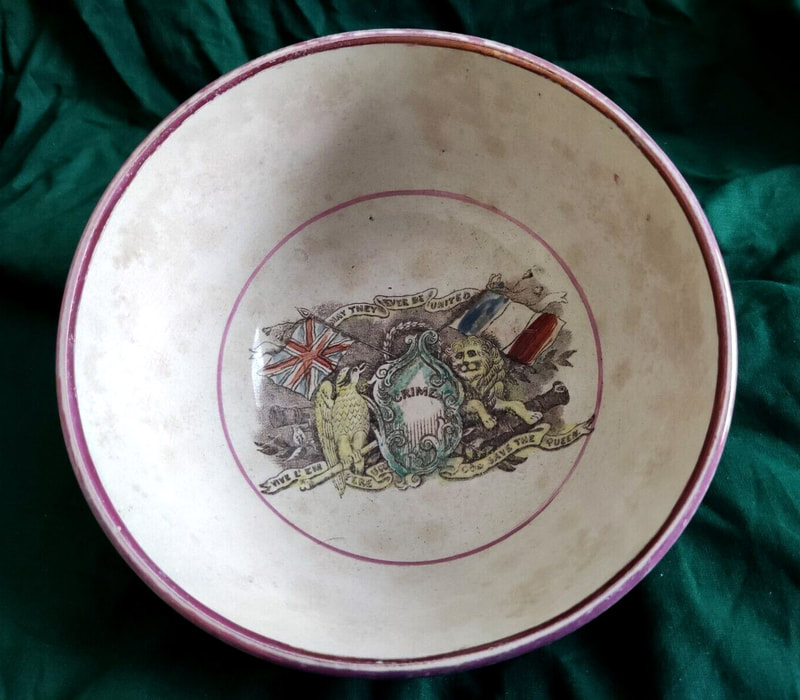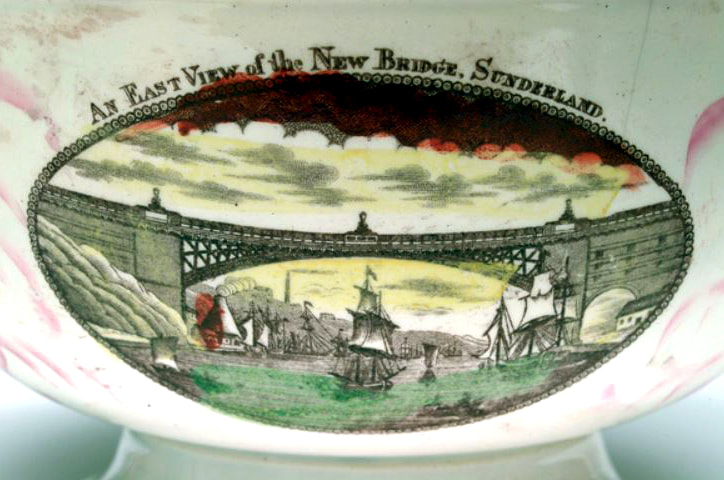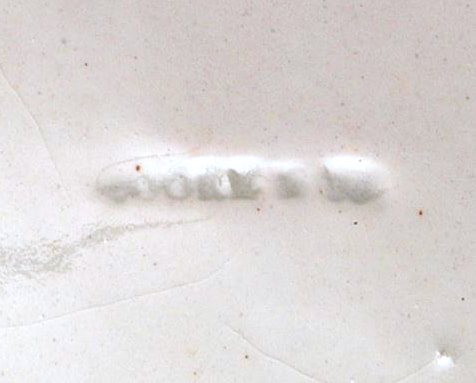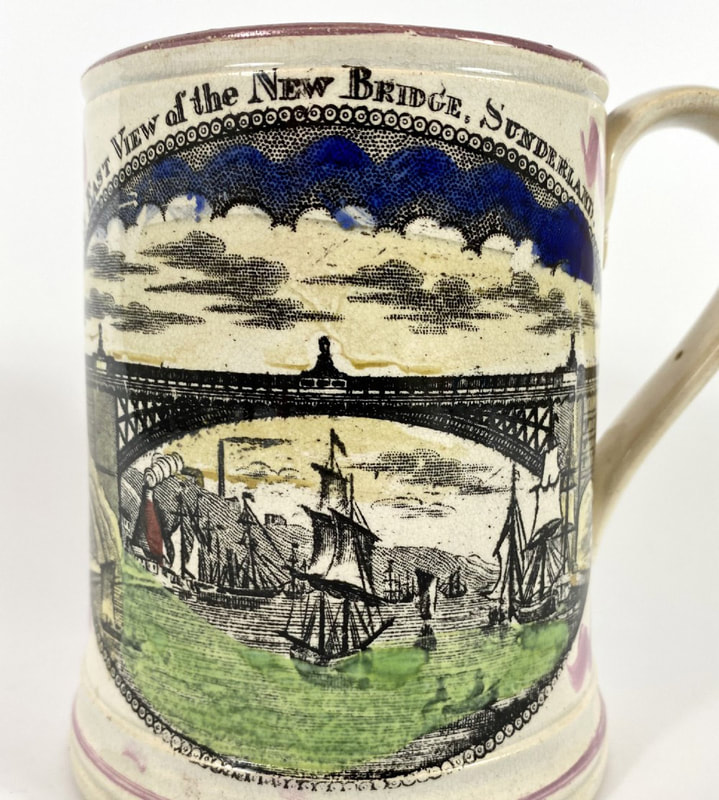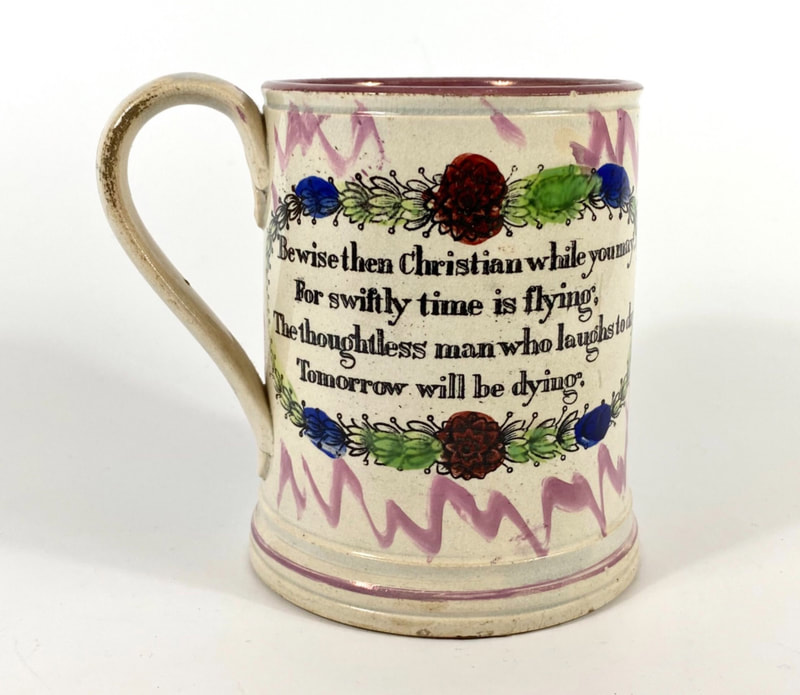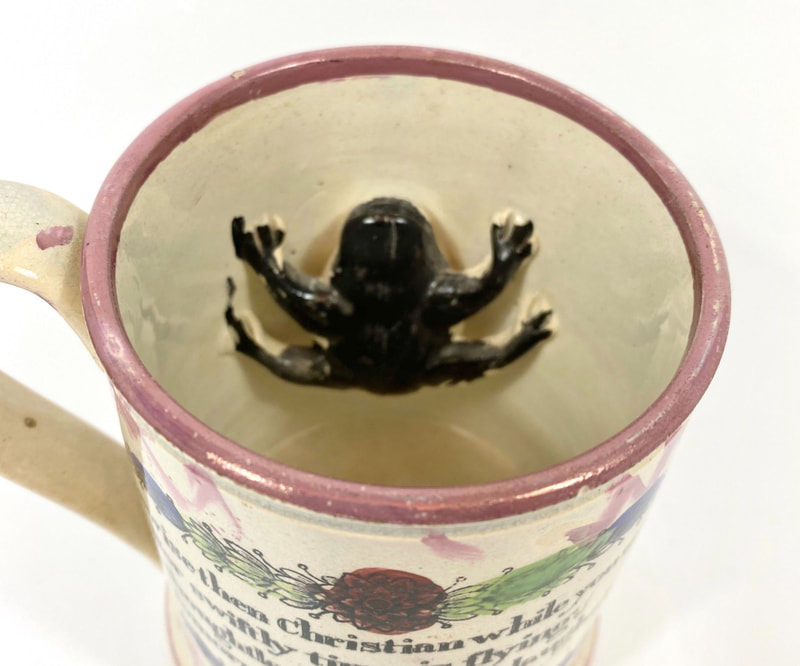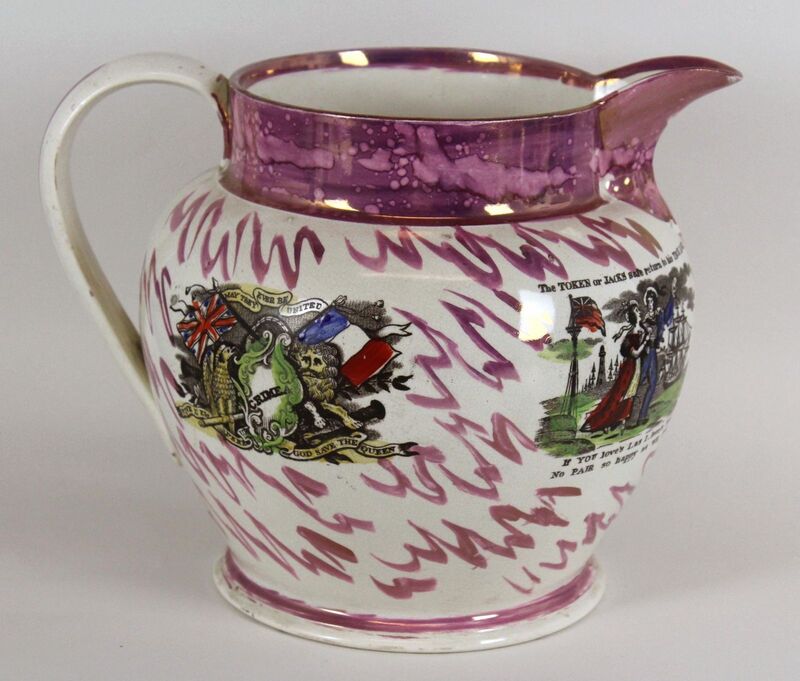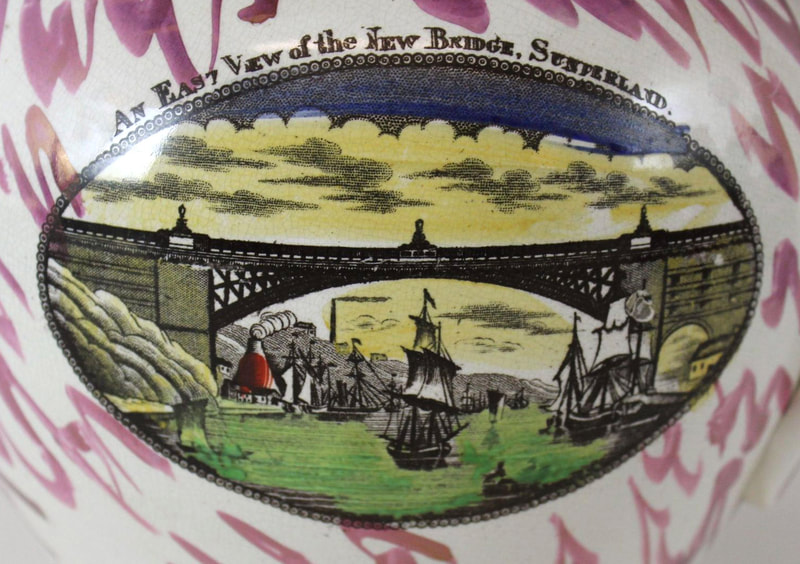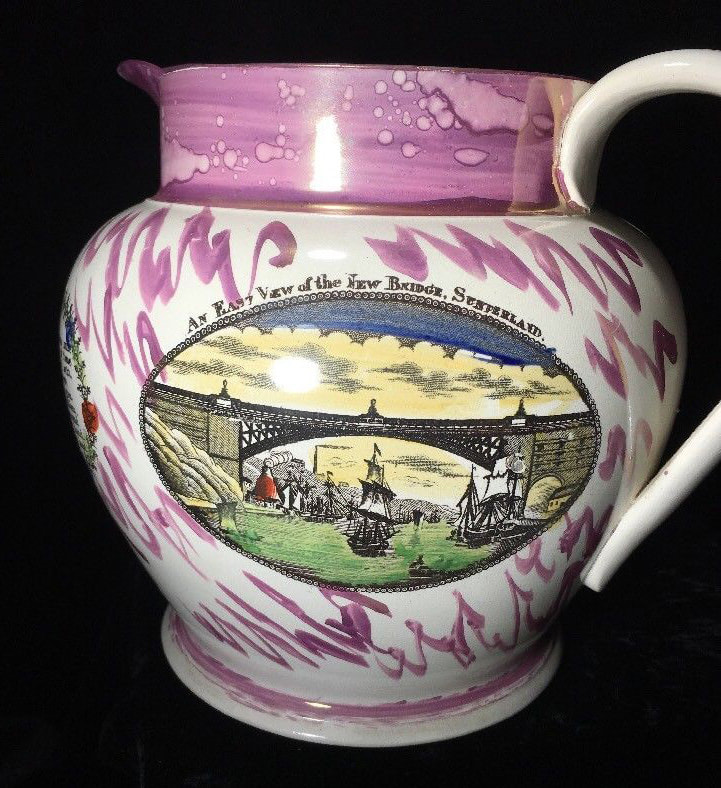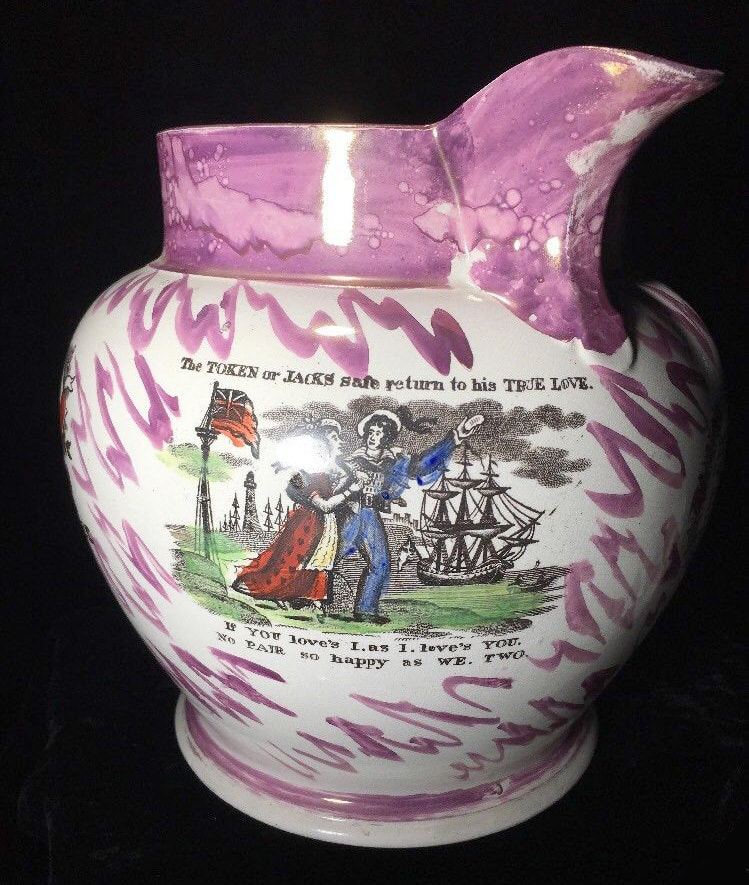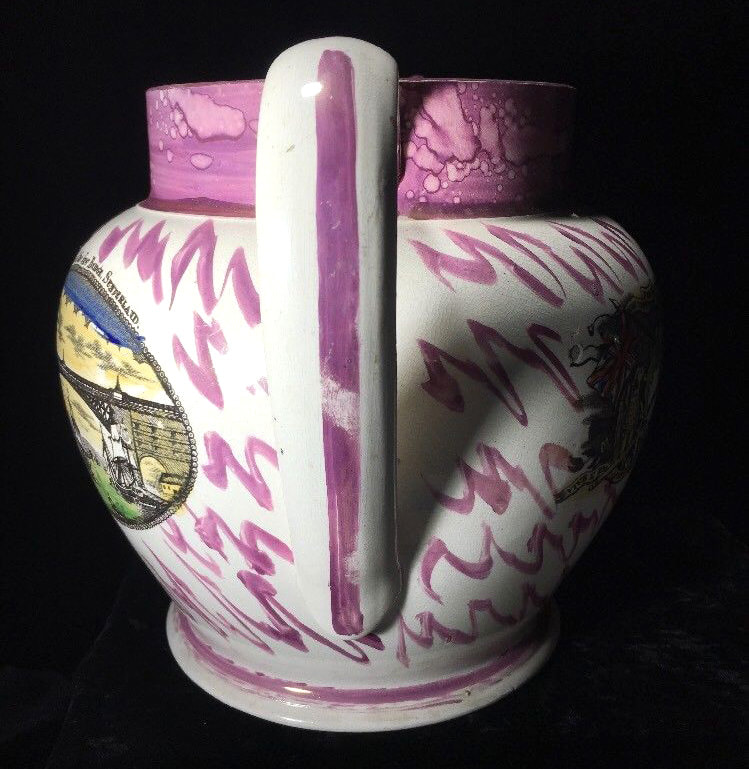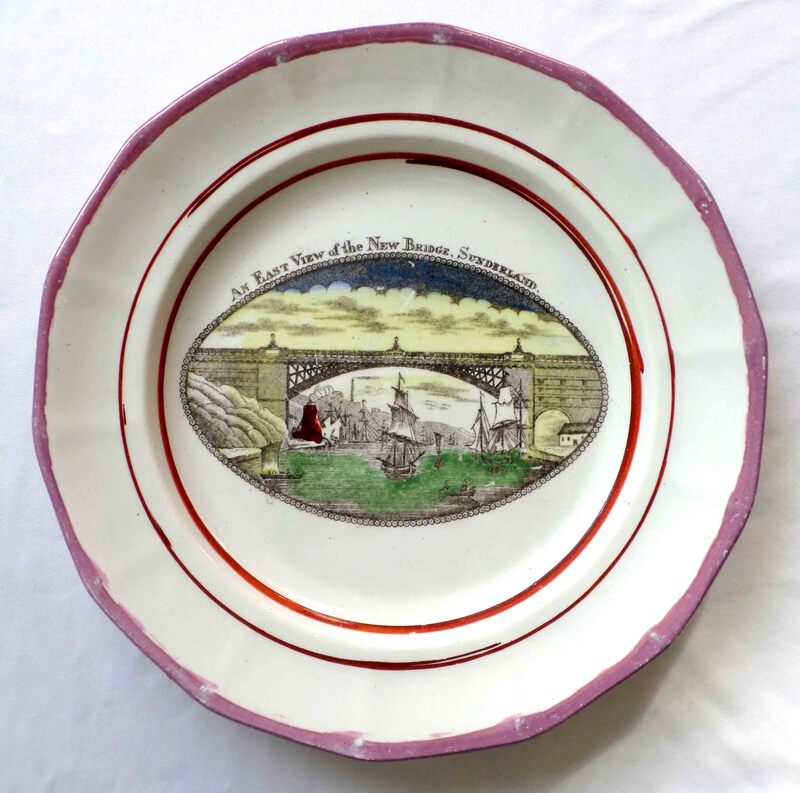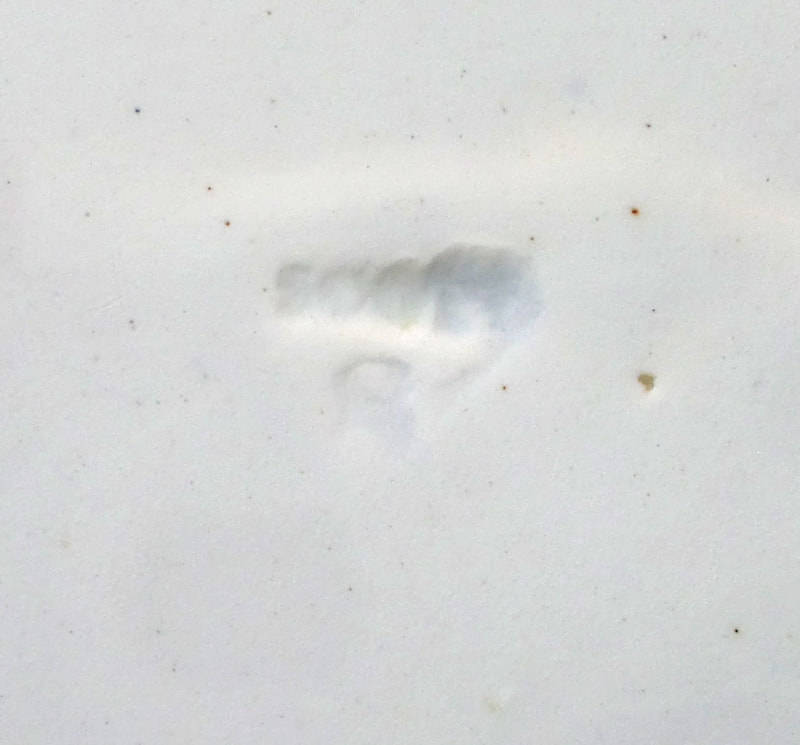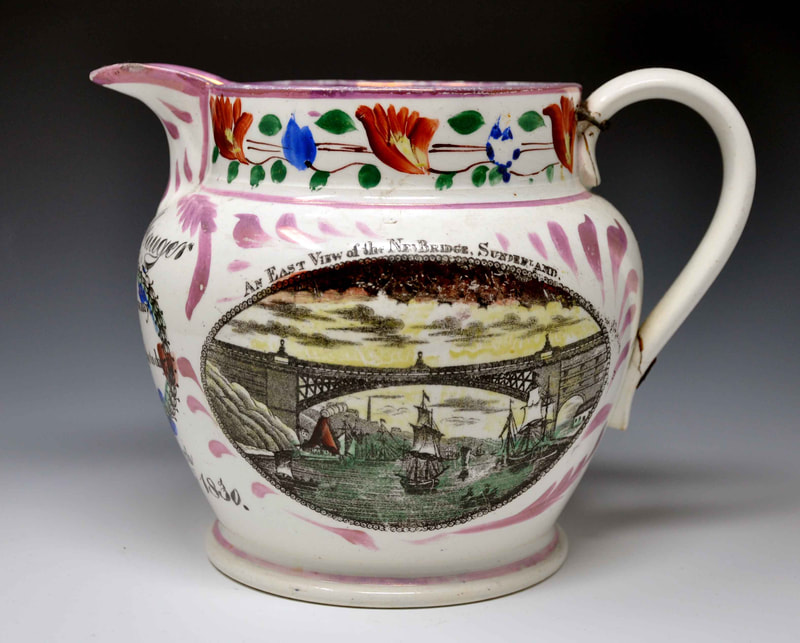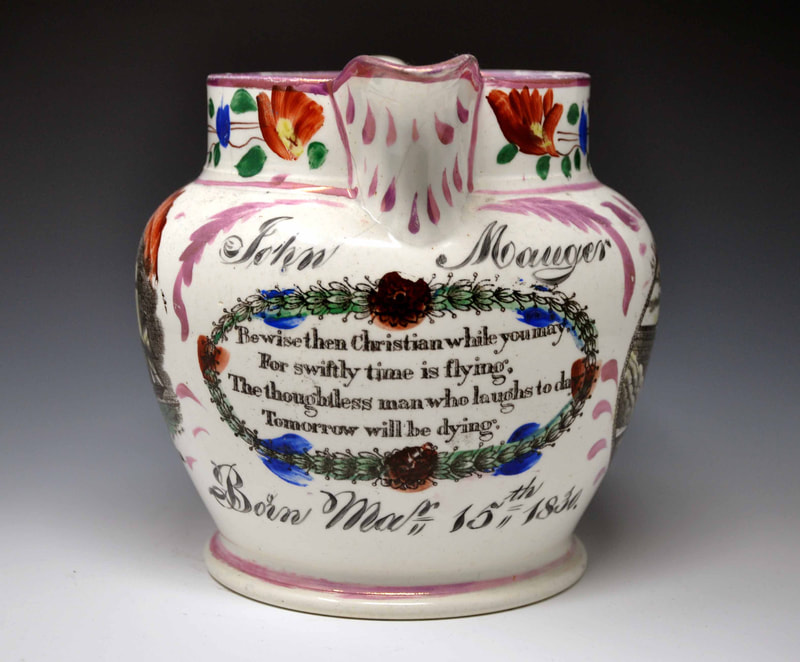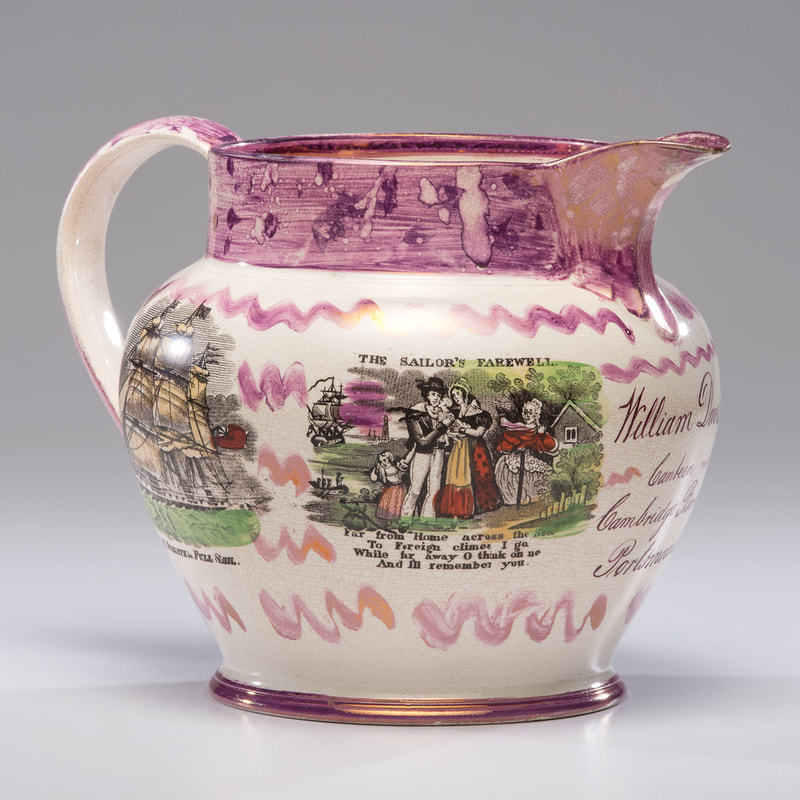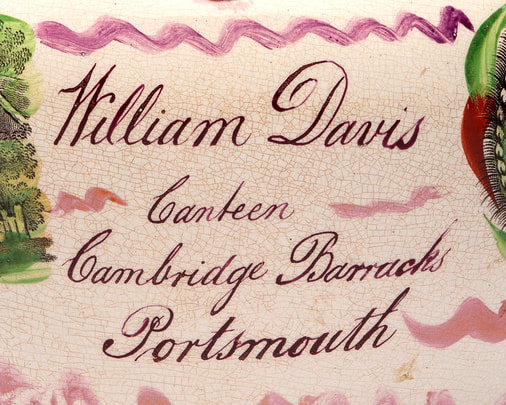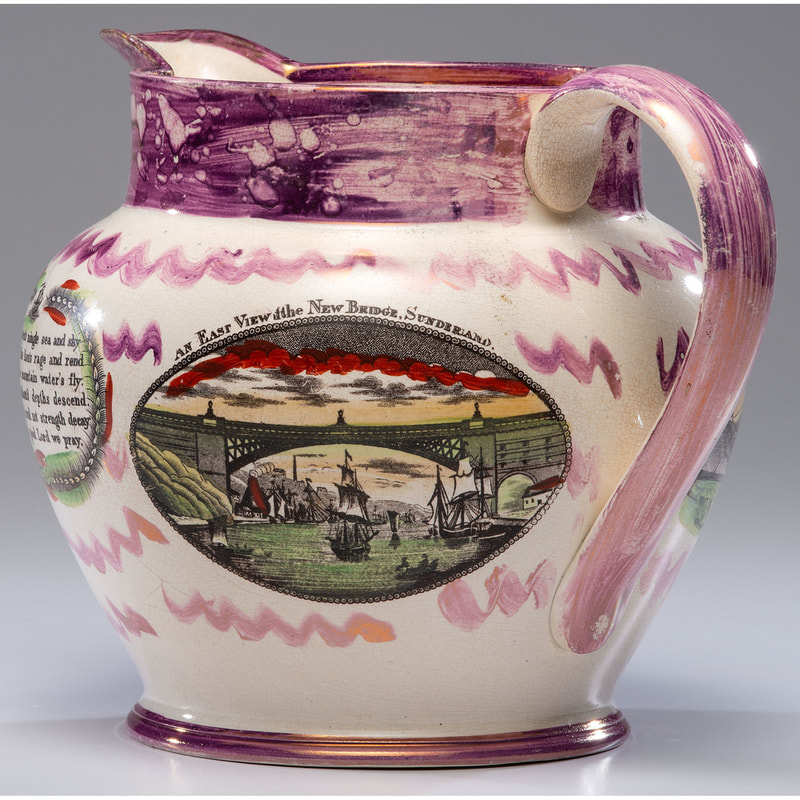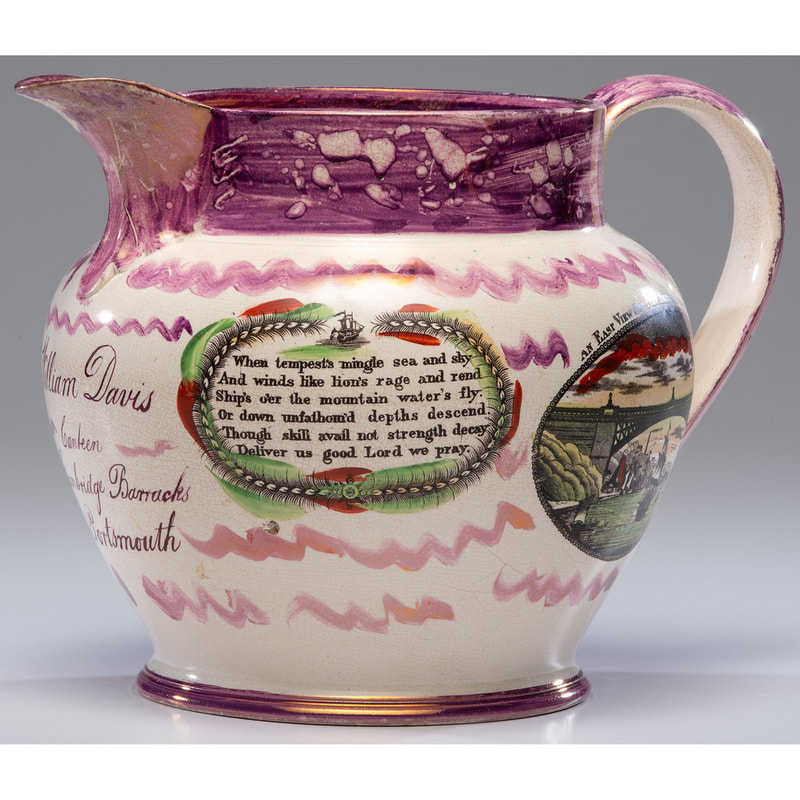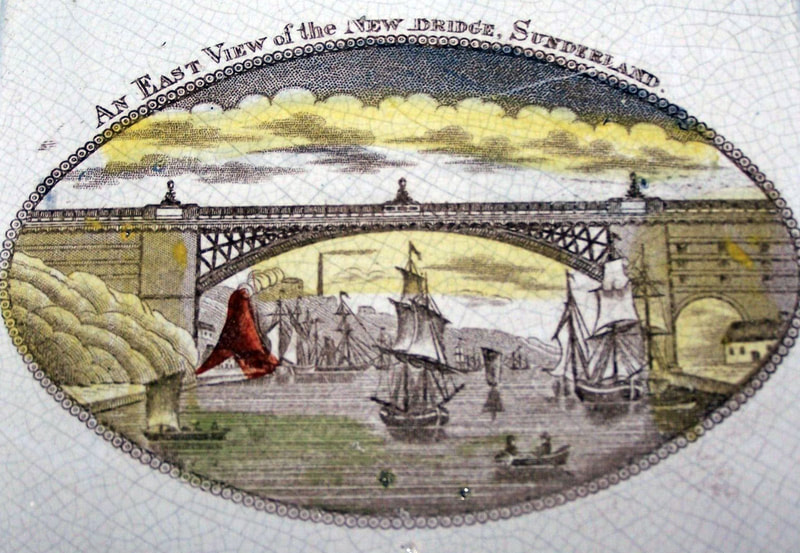An East View of the New Bridge Sunderland – Bridge 18
Moore & Co's Wear Pottery and Scott's Southwick Pottery
The transfer appears on wares with both Scott and Moore impressed marks. The most obvious explanation being, as Baker writes, that 'Scott's supplied earthenware to Moore's Wear Pottery [...] presumably plain for decoration' (Baker page 54). This is evidenced by the fact that the enamel decoration is consistent on items from both potteries (see below). This view appears on plates, bowls and jugs paired with the West View, bridge 19.
A group of plaques below showing different combinations of enamel decoration, the second from the Sunderland Museum & Winter Gardens, Tyne & Wear Archives & Museums collection. The last four, courtesy of Ian Holmes. The first plaque is of form and decoration used by Moore's in the 1850s. The last five are most likely 1860s. It is perhaps telling that this transfer does not appear on items with orange lustre used from about the mid 1860s onwards. It is possible that the coper plate became damaged, and was replaced by bridge 17, which does not appear on pink lustre items from the 1860s. However, the transfer plate apparently resurfaces years later at either Ball's Pottery or Carr's (see below).
A large punchbowl with the Trident Steamship – a transfer used exclusively by Moore & Co. I would guess that this item has the Moore impress, but unfortunately I don't have a photo.
A similarly decorated bowl with the Moore impress and an inscription for 1859. As discussed above, the East View is paired with the West View, bridge 19. Beneath it, a slop bowl with a different version of the Crimea transfer, and typical zig-zag lustre decoration.
A pedestal bowl, from the Sunderland Museum & Winter Gardens, Tyne & Wear Archives & Museums collection, with the Moore & Co impress. This bowl has the large Great Eastern transfer in the centre and other ship transfers, accompanied by the Crimea transfer and the New Bridge.
Below, a frog mug with what appears to be a Scott frog, painted black as its Moore equivalent would have been. So, likely potted at Scott's, and decorated at Moore's.
A jug with typical Moore zig-zag lustre decoration and heavily lustred collar.
A plate with near identical enamelling over the transfer to items above, but with a Scott impressed mark over a number 8. See also a pair to this plate with the West View, bridge 19.
This jug is unusually well decorated and has an inscription with a birth date of 1830. The jug was likely made in the 1860s (NB the New Bridge didn't open until 1859).
One of a pair of inscribed jugs with the transfer. This one has the Sailor's Farewell and the East View, which is the view a Sunderland sailor would have had looking back when leaving home. The other has the Sailor's Return and the West View (bridge 19).
Attributed to either John Carr & Sons, North Shields, or Ball's Deptford Pottery
As discussed above, the transfer makes a reappearance on a plaque form used by John Carr & Sons. However, it is possible that Ball's bought the plaque moulds when Carr's Pottery closed in 1893.




